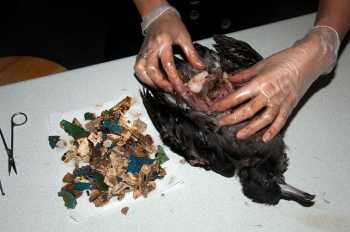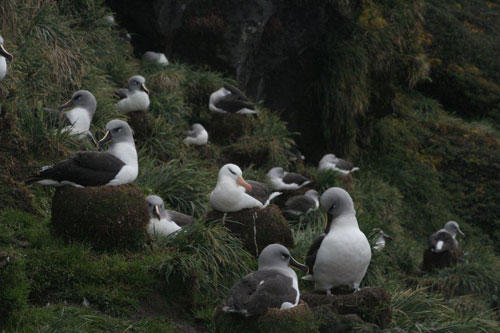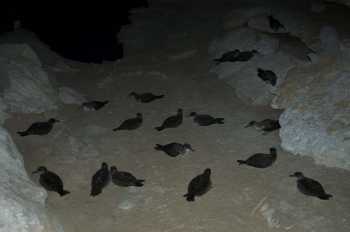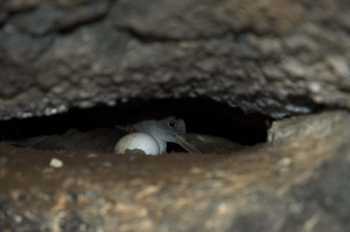The ACAP-listed Grey-headed Albatross Thalassarche chrysostoma has been listed as globally Endangered because of a decline since the 1970s of its largest breeding population, occurring at South Georgia (Islas Georgias del Sur)*. A recent resurvey of a subset of colonies at the island indicates a decrease in numbers over the last decade of 5% a year.
Recent analyses of long-term records of banded birds found that annual survival rates of juveniles were lower than expected and highly variable.
Records from observers on fishing vessels have shown that immature birds are killed by pelagic longline fisheries in areas that are not used regularly by non-breeding adults. In addition, circumstantial evidence suggests that because of the population decline there may have been a density-dependent increase in predation by giant petrels Macronectes spp. of juvenile Grey-headed Albatrosses, both as they fledge and in the few days immediately thereafter when they often rest on the sea close to the island.
In May 2018, 16 satellite tags (PTTs) were attached to Grey-headed Albatross chicks prior to their departure from Bird Island to map foraging areas of juveniles in order to determine the overlap with fisheries and to obtain data on juvenile survival. The birds are being tracked in near real-time using the Argos system.
Click here to follow the birds’ at sea movements and distances travelled, with updates expected several times a day.
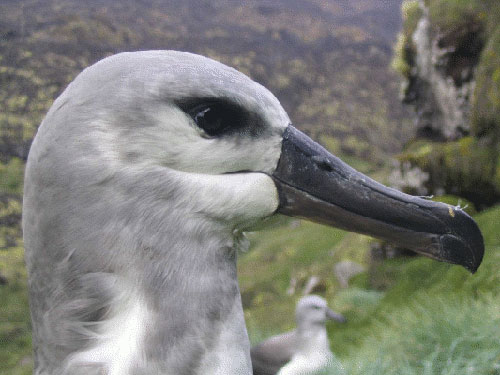
Fledgling Grey-headed Albatross, photograph by Marienne de Villiers
With thanks to Richard Phillips.
Selected literature:
Clay, T.A., Manica, A., Ryan, P.G., Silk, J.R.D., Croxall, J.P., Ireland, L. & Phillips, R.A. 2016. Proximate drivers of spatial segregation in non-breeding albatrosses. Scientific Reports 6: 29932.
Pardo, D., Forcada, J., Wood, A.G., Tuck, G.N., Ireland, L., Pradel, R., Croxall, J.P. & Phillips, R.A. 2017. Additive effects of climate and fisheries drive catastrophic declines in multiple albatross species. Proceedings of the National Academy of Science of the Unites States of America 114: E10829-E10837.
Phillips, R.A., Gales, R., Baker, G.B., Double, M.C., Favero, M., Quintana, F., Tasker, M.L., Weimerskirch, H., Uhart, M. & Wolfaardt, A. 2016. The conservation status and priorities for albatrosses and large petrels. Biological Conservation 201: 169-183.
Poncet, S., Wolfaardt, A.C., Black, A., Browning, S., Lawton, K., Lee, J., Passfield, K., Strange, G. & Phillips, R.A. 2017. Recent trends in numbers of wandering (Diomedea exulans), black-browed (Thalassarche melanophris) and grey-headed (T. chrysostoma) albatrosses breeding at South Georgia. Polar Biology 40: 1347-1358.
John Cooper, ACAP Information Officer, 30 May 2018
*A dispute exists between the Governments of Argentina and the United Kingdom of Great Britain and Northern Ireland concerning sovereignty over the Falkland Islands (Islas Malvinas), South Georgia and the South Sandwich Islands (Islas Georgias del Sur y Islas Sandwich del Sur) and the surrounding maritime areas.
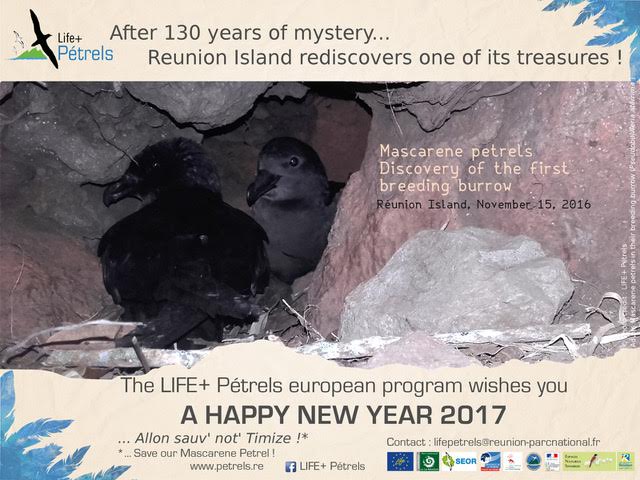

 English
English  Français
Français  Español
Español 